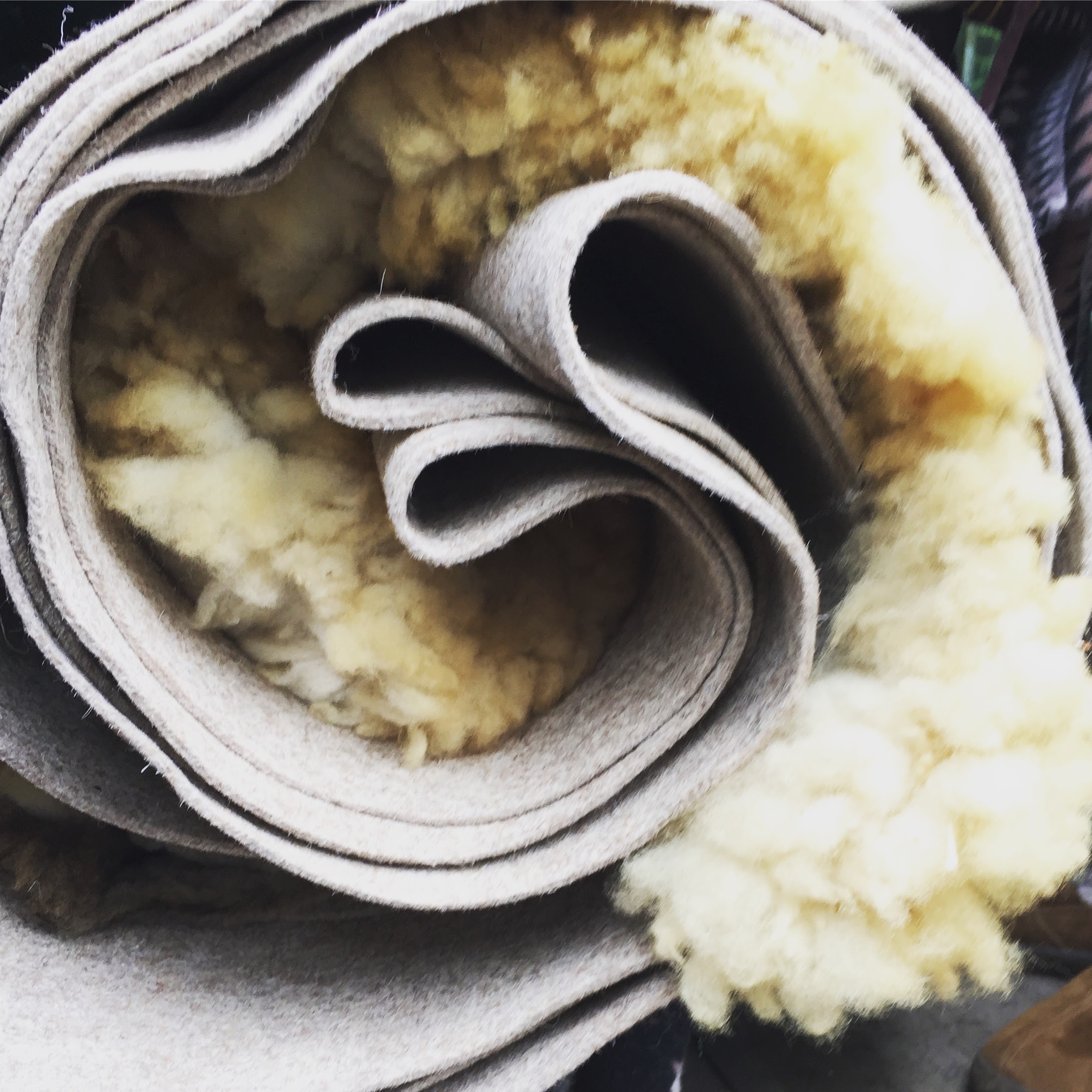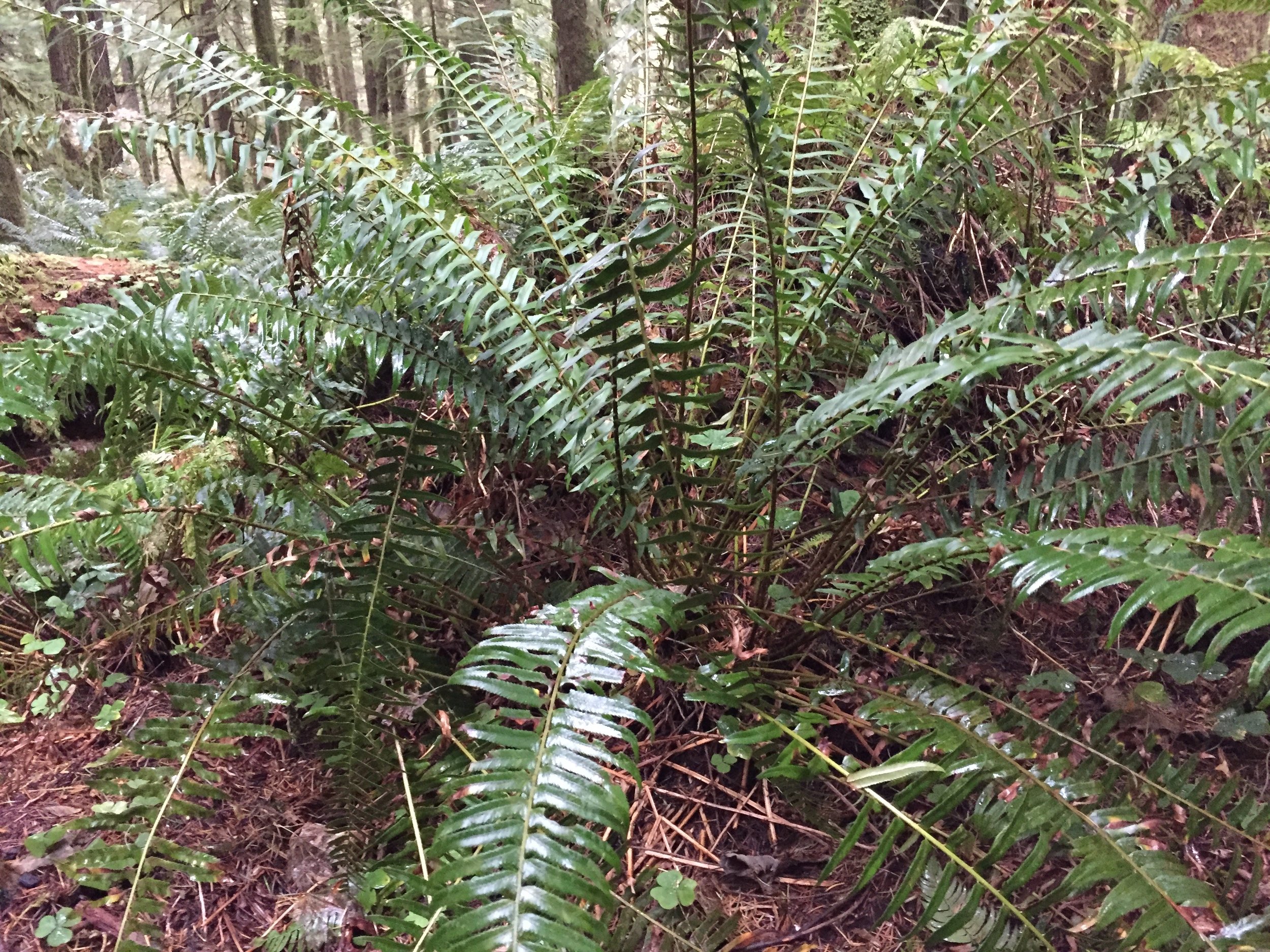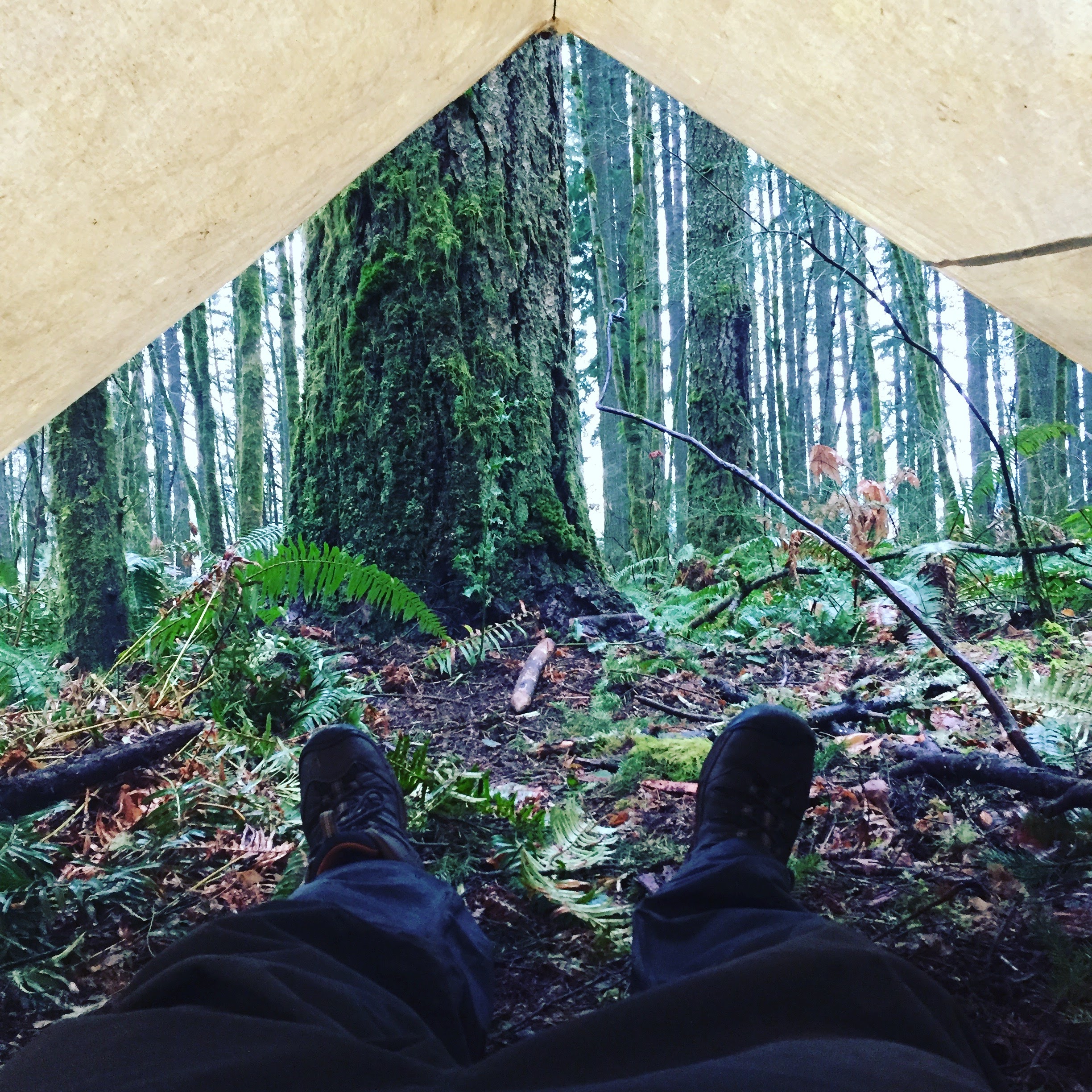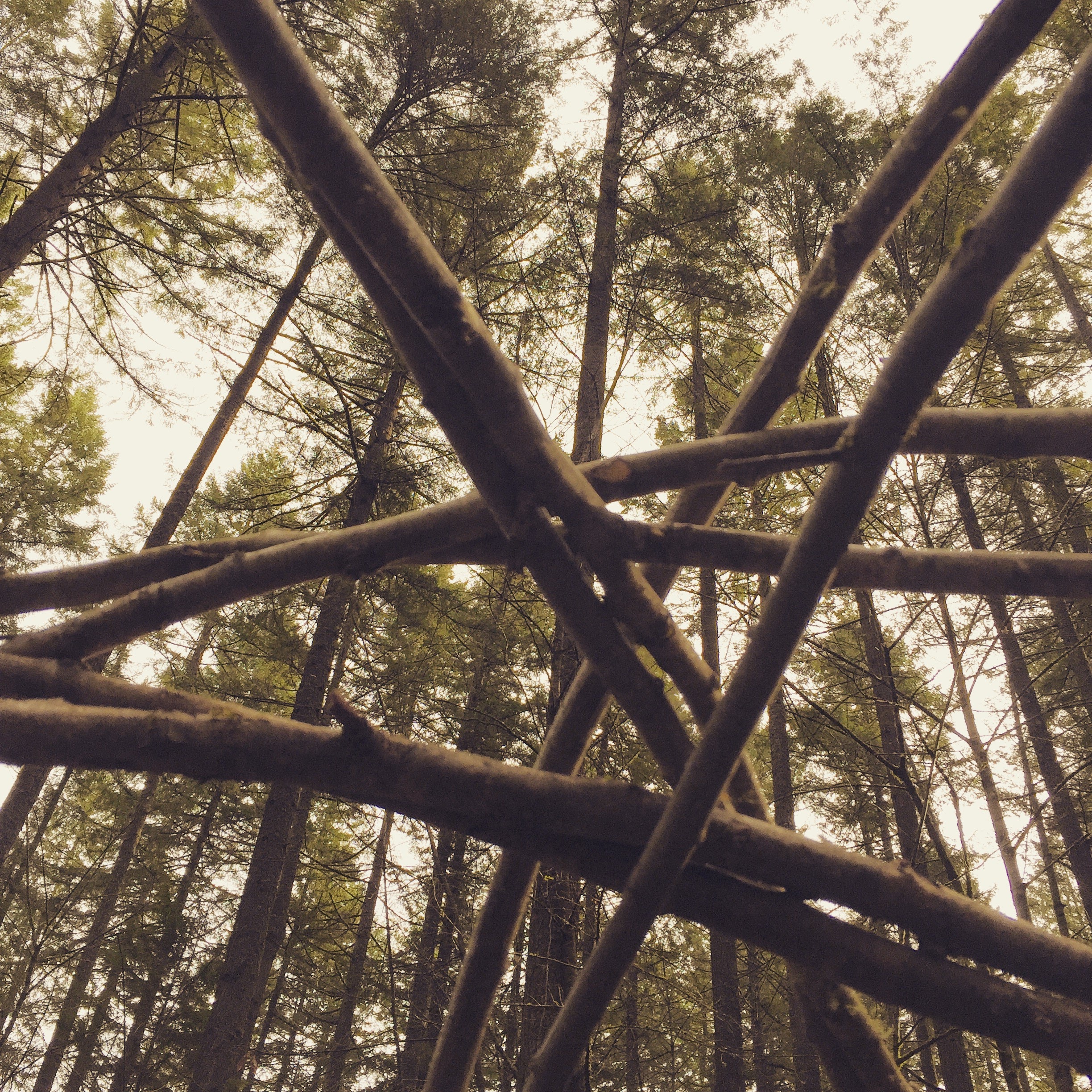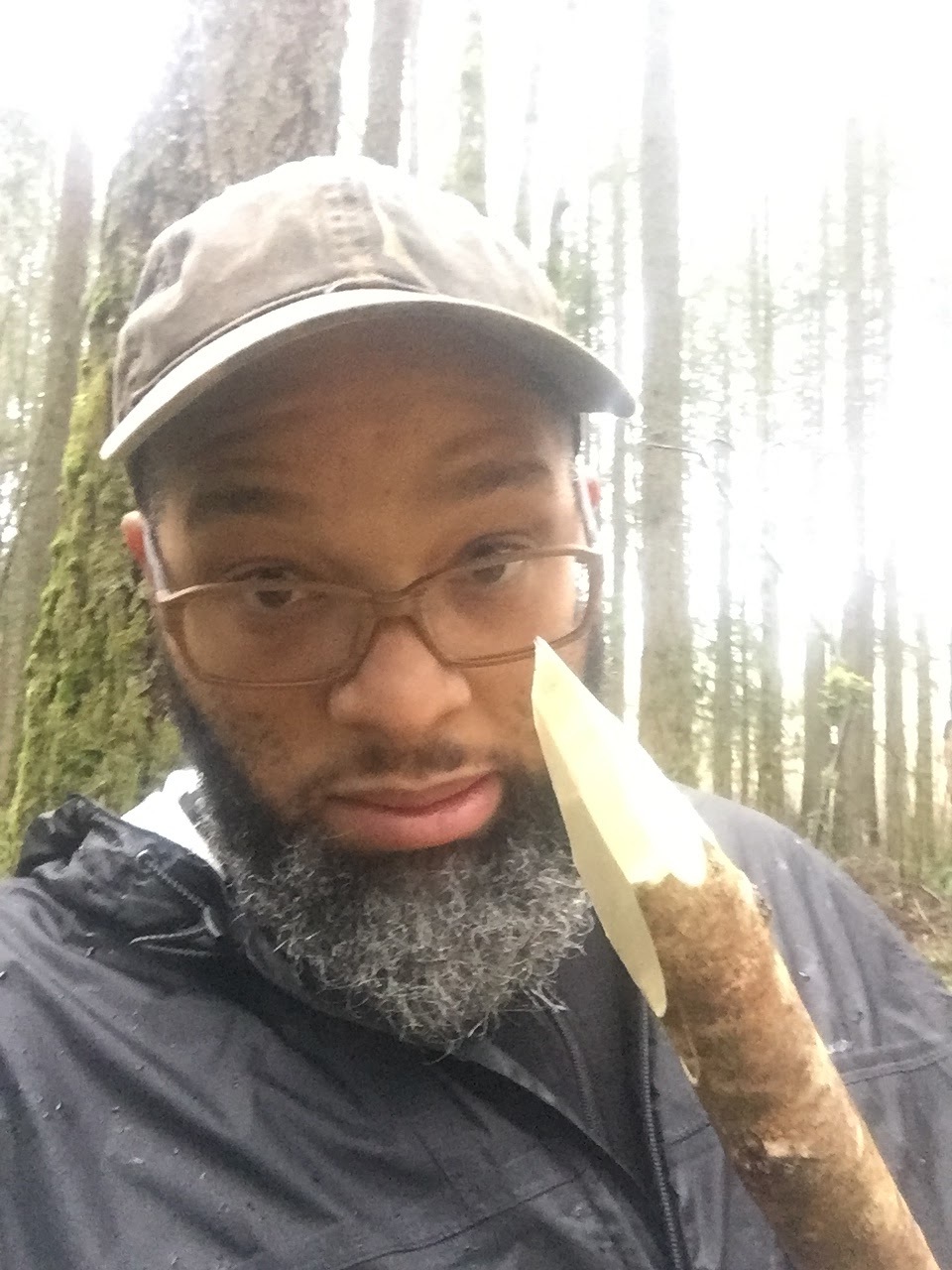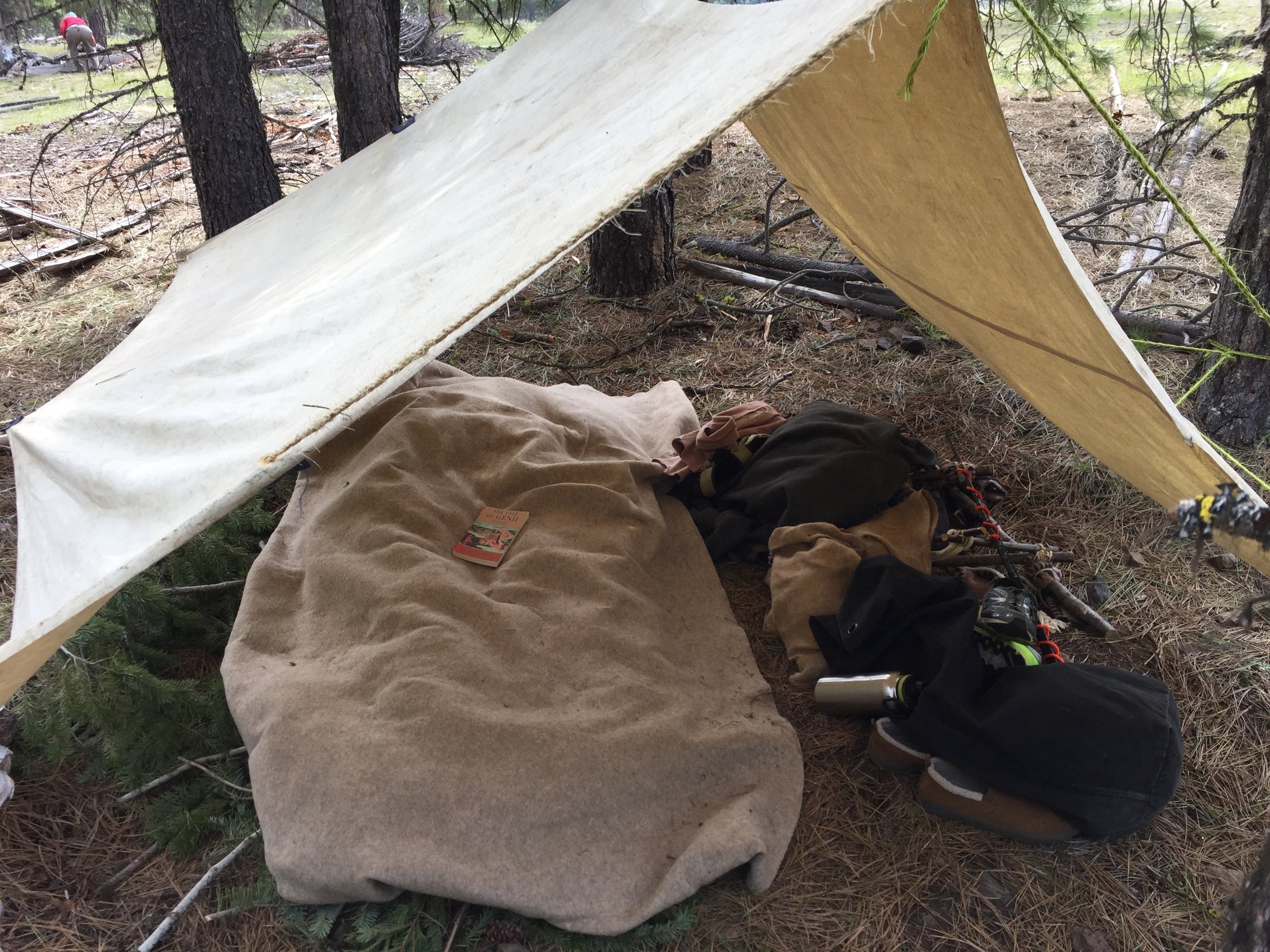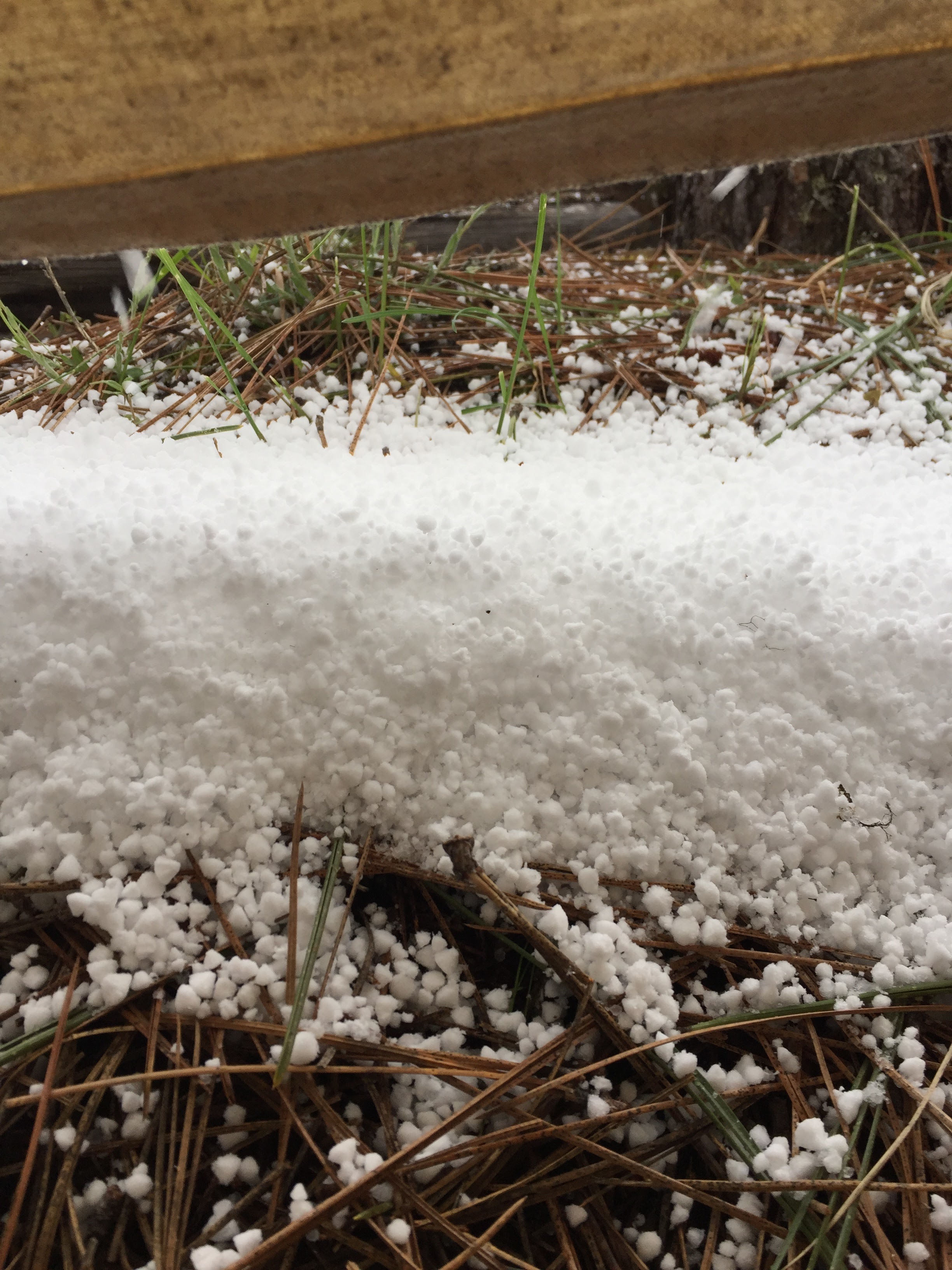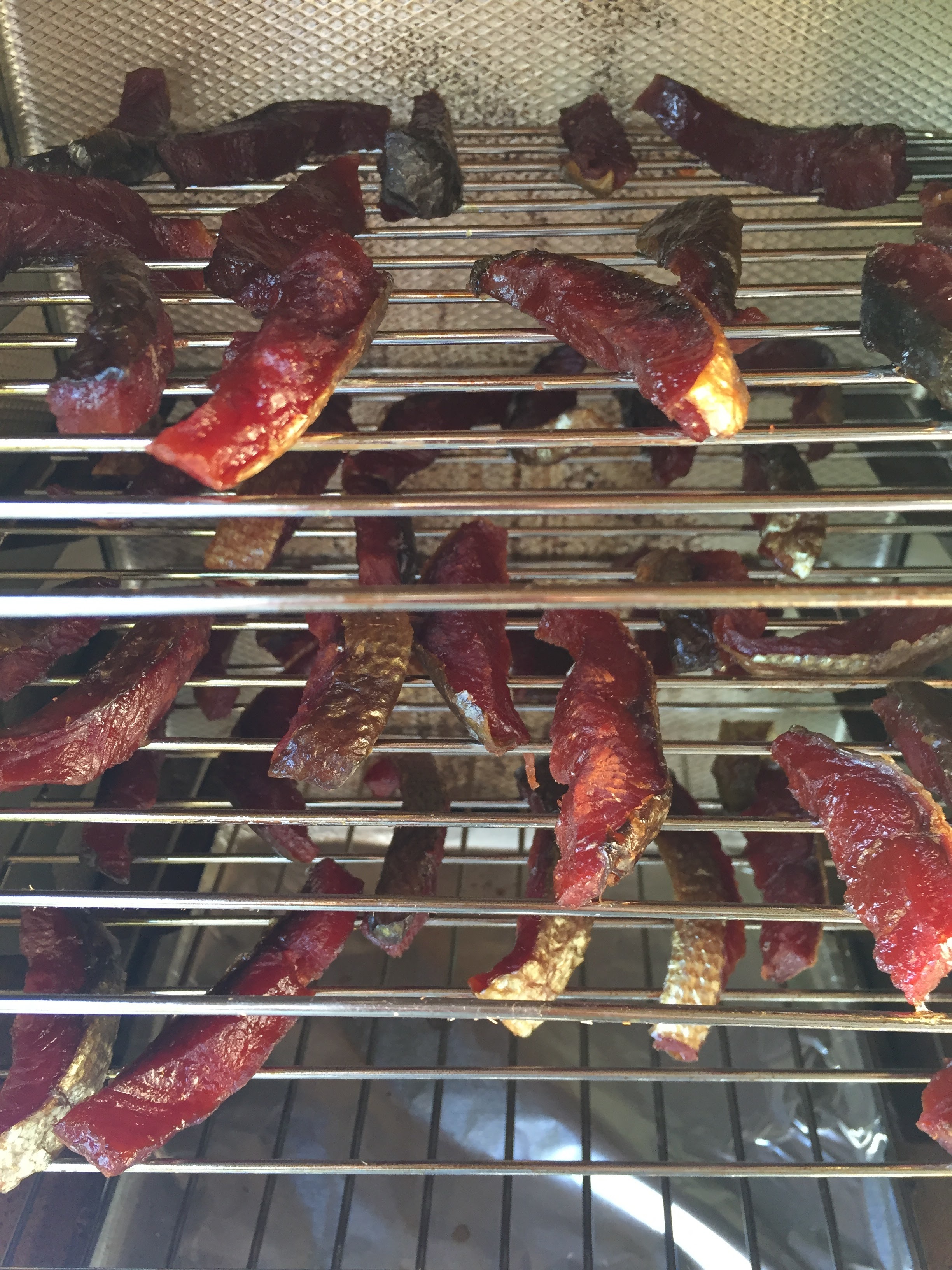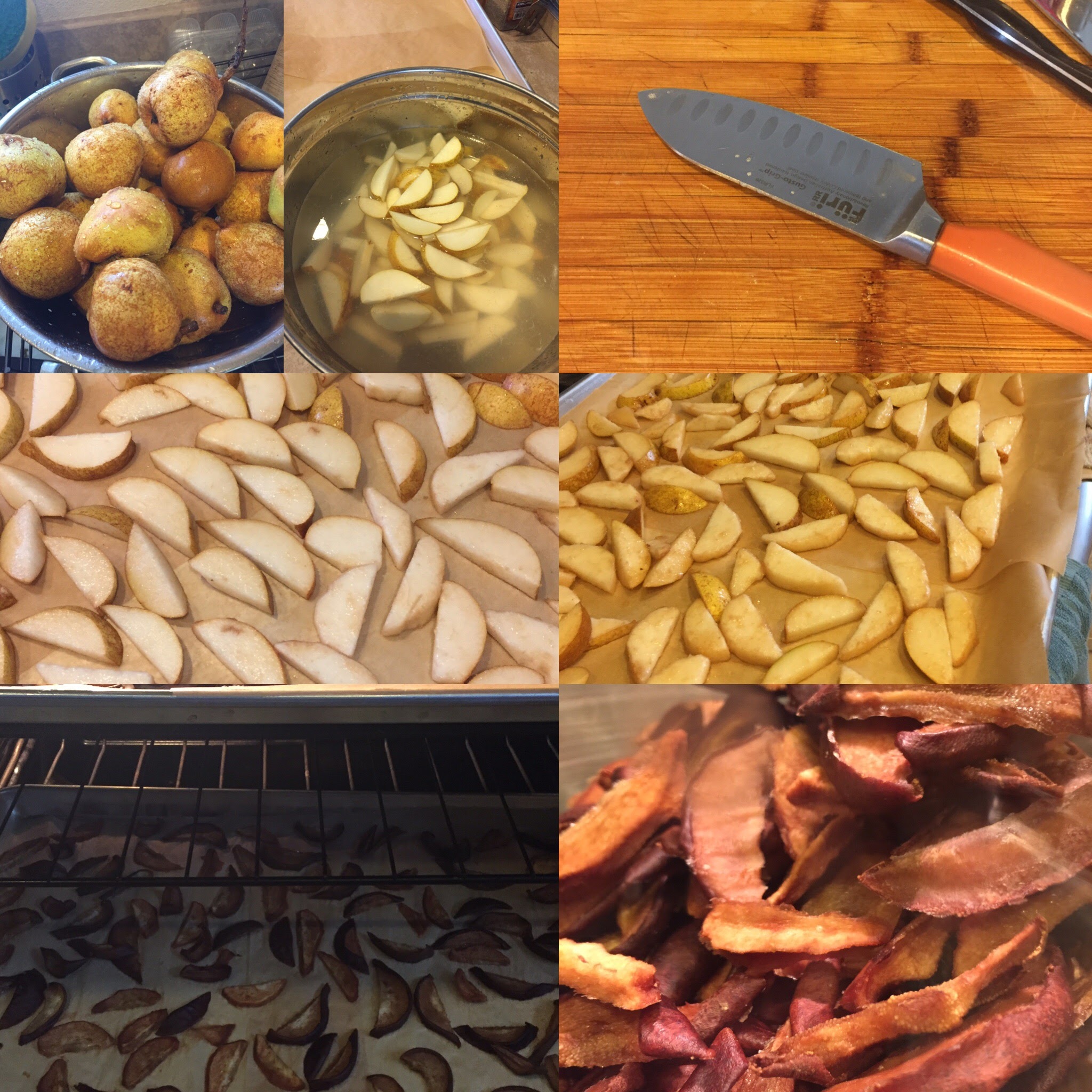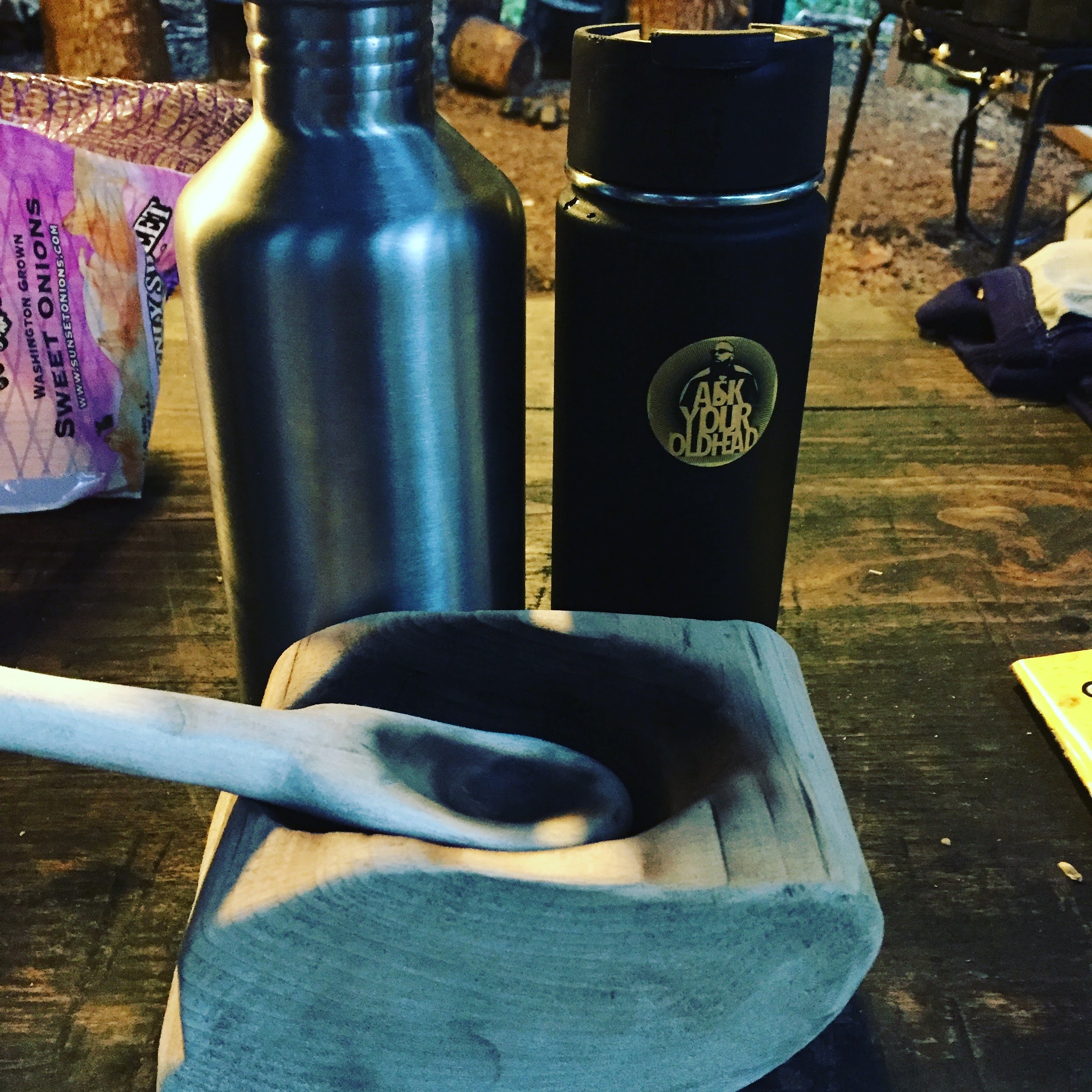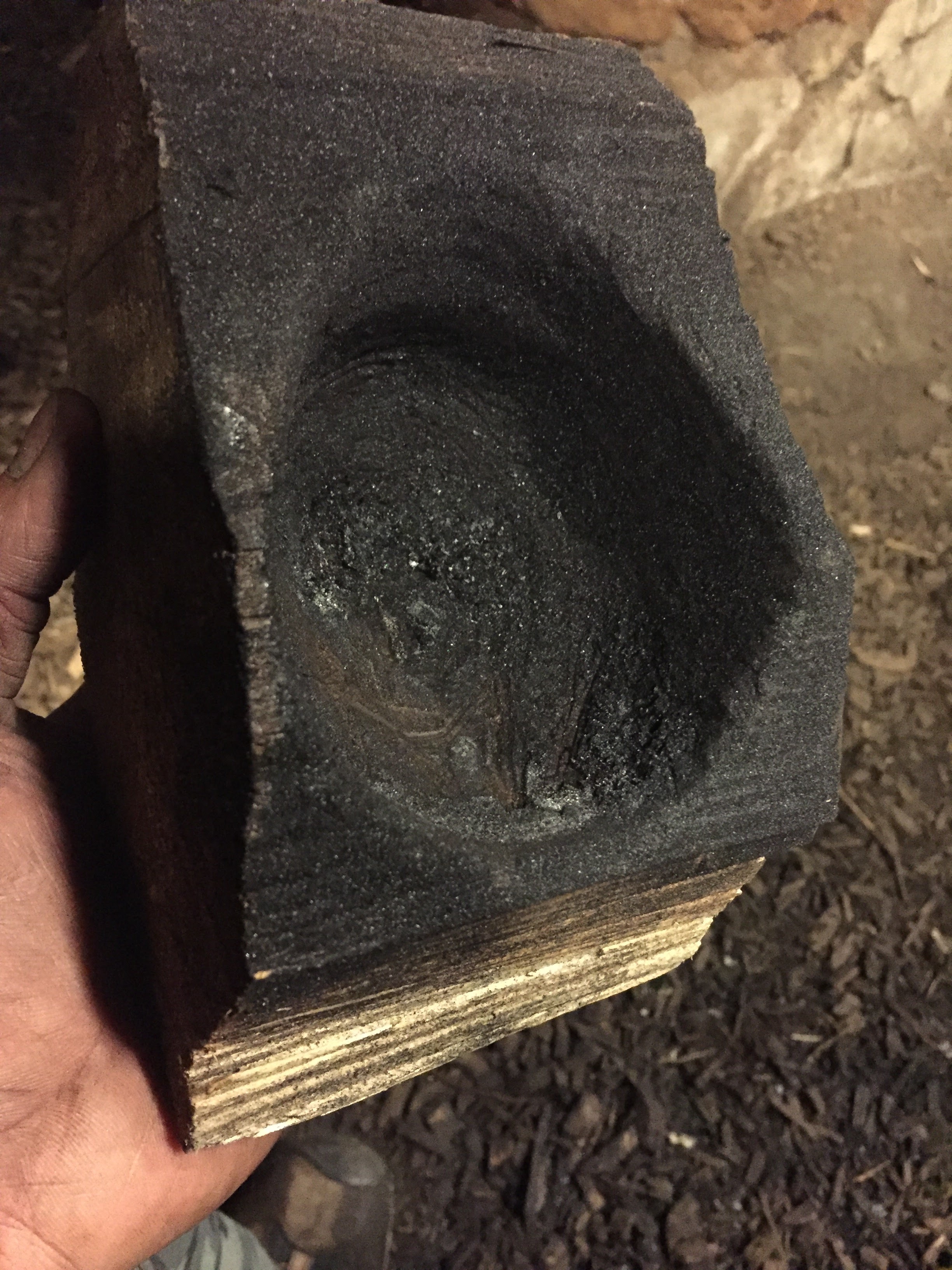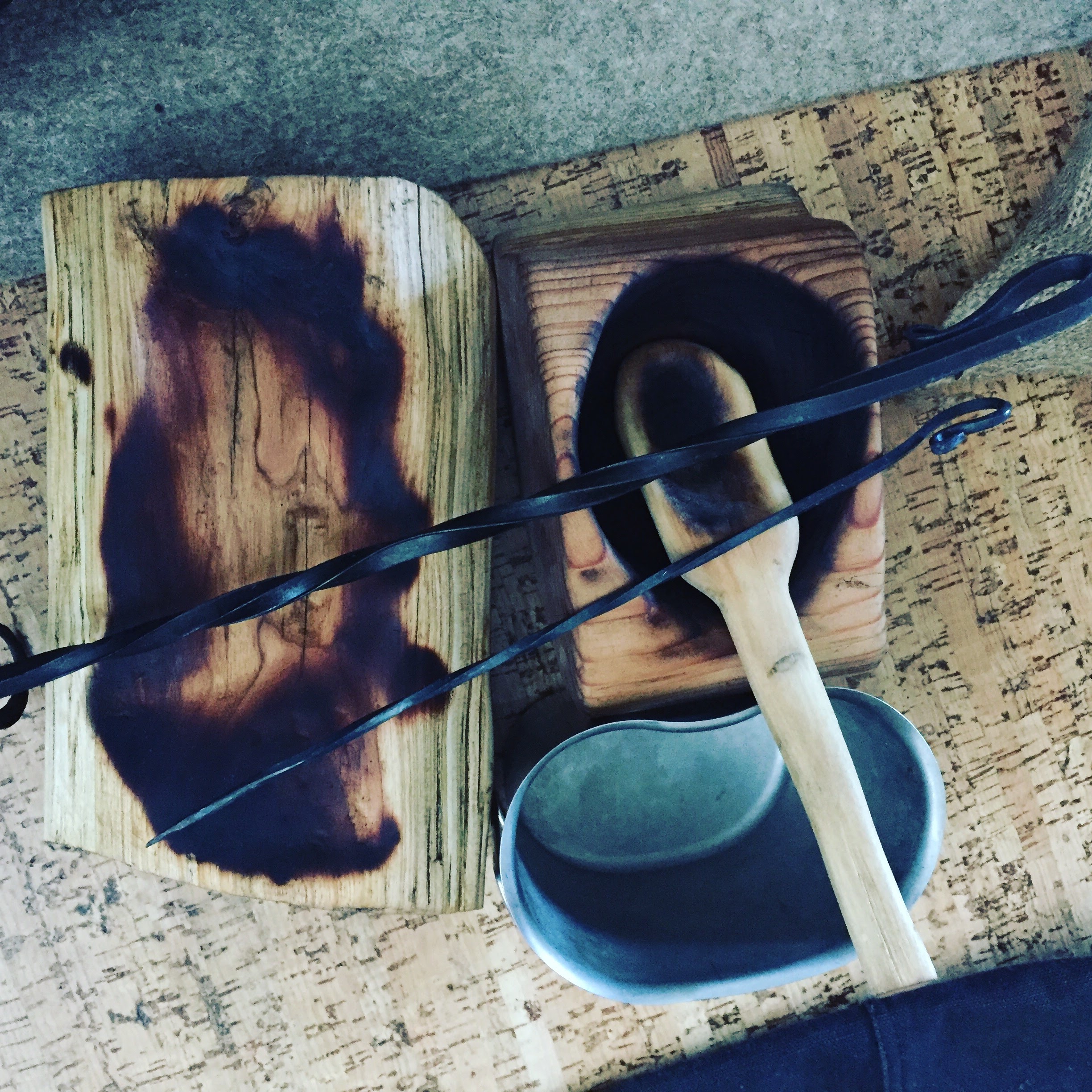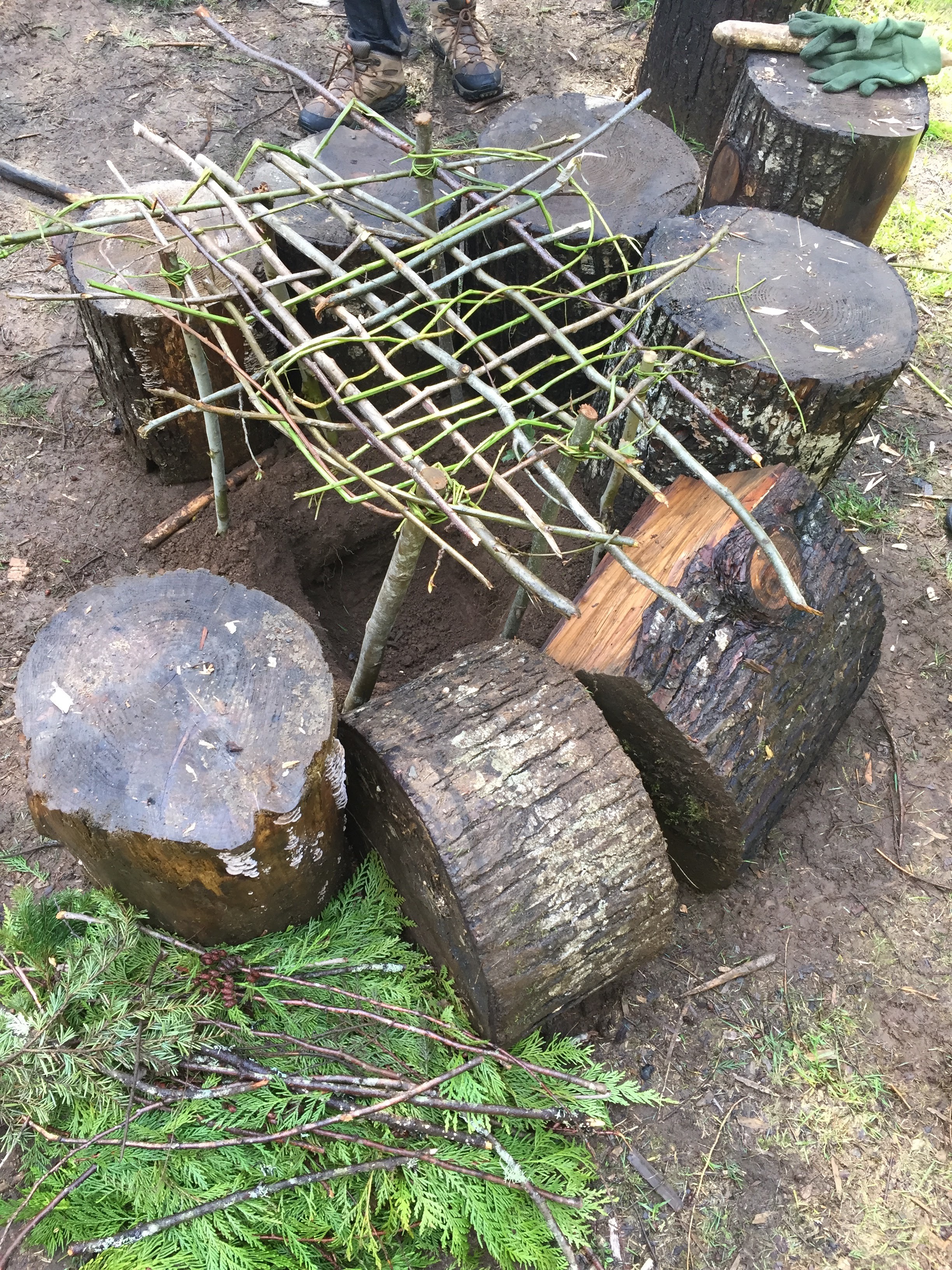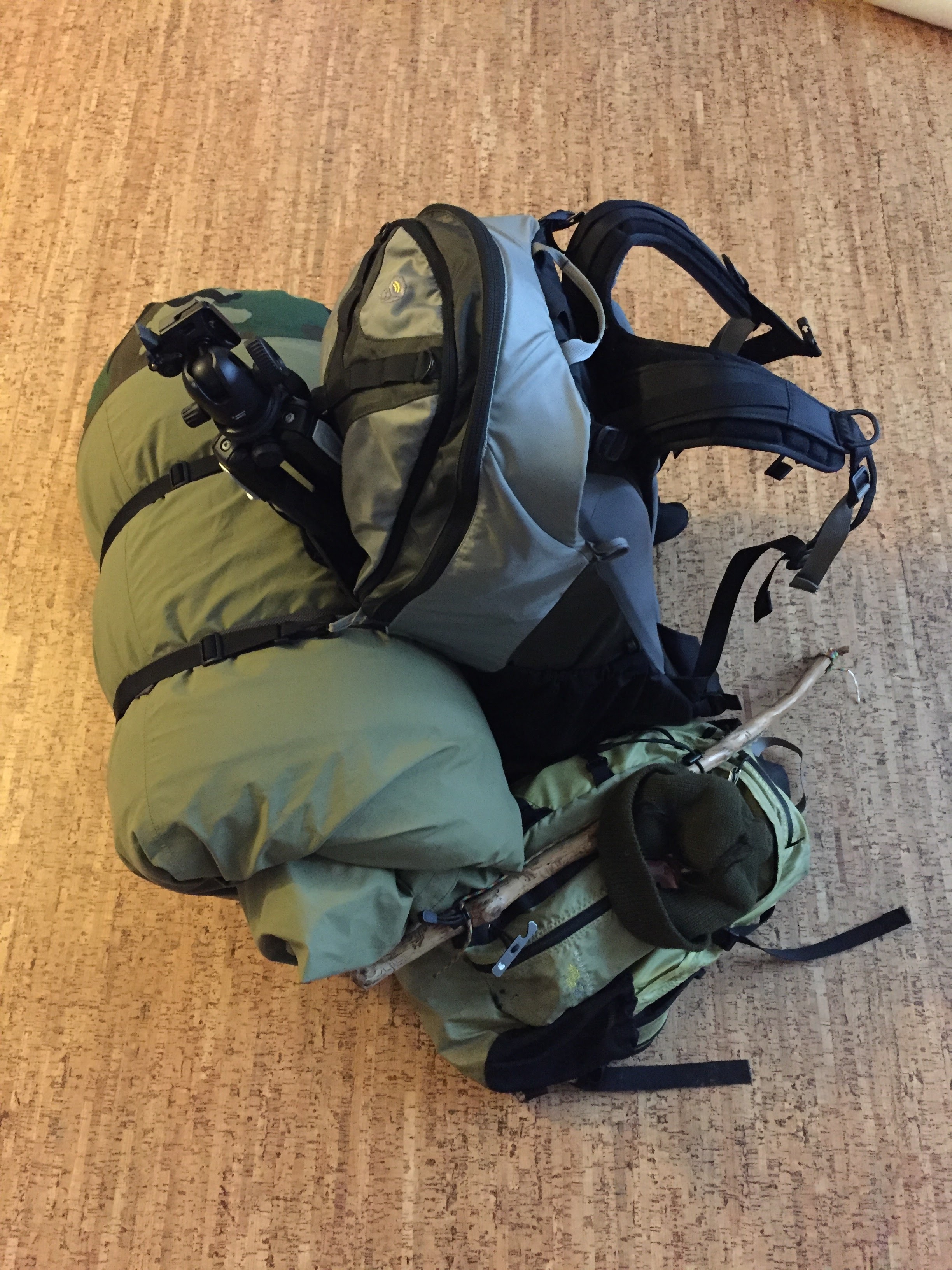Not Alone In The Woods
Not Alone In The Woods
Justice Rajee
Find a better stick. The strength based response to finding the appropriate materials to solve the task in front of you. I learned this phrase well working with Sarah, Jamey, and Scott for the last nine months in the Trackers PDX Wilderness Survival Immersion. The program is a year long wilderness skills training experience at Camp Trackers in Sandy, OR. Each month we spent a weekend learning skills like shelter building, starting fires, preserving food, tool making, foraging, plant identification, knife making, hiking, tracking, wildlife identification, hide preparation, and more. We camped each weekend and worked on a new skill in preparation for an end of the year five day camp using the skills we learned over the course of the year. I took some time to let the experience wash over me and now I am ready to share some of my thoughts on my experience. The following paragraphs and images will tell the story.
Folks from my community experience many barriers to engaging with our open spaces. I like the outdoors. You can look here and here and here for information on the structural challenges. It does not take much to find it, now that folks are really writing about it. I did some scouting as a youth and that was cool, but it was not sufficient. I like experiencing nature, but I needed to develop my skills to really feel at peace in forest. Live learn teach. That is the motto that I walk with daily. The larger structural and cultural issues need to be addressed, but that was not my focus. For me all change starts with what I can do with me first, so I decided that the fastest road to getting myself out into the natural world more often would be learning some skills to improve my own understanding and confidence. That is what brought me to Trackers.
This is not man versus nature. The notion that humans must subdue the world around them in order to thrive is simply wrong headed. Now this does not mean that nature can't be brutal in the way operates, but it is not unfair. If you learn the rules and respect them you will thrive. Thriving not surviving was goal number one. Surviving is hitting the bare minimums. Just making it. It is painful, stressful, and really not much fun. I think going in with a plan to survive is one of the notions pushing folks away from camping and enjoying the outdoors. Roughing it is equated with being in a state of angst and teetering on exposure. That is the lie of the prevailing narrative as it concerns the outdoors. The idea that by camping one is connecting with a less advanced state and thus it should be wet, cold, and discomfort. As if those that came before us spent all their days waiting on the arrival of canned goods and ultralight ponchos. Finding what you need to be at peace and in comfort in the forest is just a different application of our intelligence. No need to rank it. Developing your skills is apart of developing your confidence. One feeds the other. Losing that belief will open you up to seeing the outdoors in a new light.
Fire. You need to stay warm and dry. In the Pacific Northwest you are more likely to die of exposure in the rain and wet than freeze to death or get eaten by some wild beast. How do you start one? What tools do you need? What materials do you need? What steps should you take? I got a coal. I learned to prepare materials. Even if you have blow torch, trying to start a fire with the wrong materials is a fools errand. The best move is preparing what you need before you venture out in the forest. I will continue to practice bow drill, but I will mix in some other methods. I have been working on a tinder bag for my forest kit.
Shelter. Humans don’t come with shells, scales, or thick fur. Building cover is vital. Modern tents are amazing, ultra light, warm weather, cold weather, hanging from mountainsides and what not. That is all cool, but the basics of how to make something that will keep you warm, keep you dry, and allow you to rest. I learned this year that getting a good night’s rest was a valuable resource in the forest. I waterproofed a canvas tarp to make a cover from the elements that were not derived from a petroleum byproduct. Boiled linseed oil, mineral spirits, and beeswax it works. Pine boughs made the most comfortable bed I have ever had in the outdoors. If you stay under your blankets I promise the coyotes will not snoop. I will have to keep trying the things we learned. I will be experimenting where I can and seeing what works for me. Shelter building is really fun. If you liked building forts as a kid then shelter building is for you. You don't have to go all canvas and what not. Use what you have and have fun with it.
Clothing. I started the year trying to find the right gear to get through a weekend comfortably. I wrestled with my developing vision of what I really would like to do out in the forest. I have some interest in through hiking, but it is not my goal. I think I am more interested in becoming highly familiar with afew areas. Returning multiple times, sheltering, building camps and learning the place on a deeper level. The base layers really matter. Some nice wool makes it much easier to chill out in a damp camp after a day of projects and such. Having a couple pair to switch out for sleeping is really nice too. Synthetics have their place, but some days all the plastic rustling starts to get to me. I will keep searching for nice wool and other natural fiber gear. I tried some old Swiss Army wool pants. They were not crafted with my dimensions in mind. I am going to have to make some gear too. Check the youtube, some real nice reworking of wool blankets and such. I turned some wool blanket remnants into a nice multipurpose tool. Scarf, breach cloth, bed roll wrap it’s amazing. I need my official Rajee in the forest look book. Changing socks is really important, have extra socks. Trying to sleep with cold feet is not the business, although some folks like a little chill on the toes. Find you comfort zone and be creative.
Food. You have to eat. Procuring our own food for the end of the program trip was on of the task we were assigned during the year. We prepared lamb, turkey, acorn, dock seed, and dried fruit. Now I don’t think it is practical for all of my camping trips to forage, jerky, and dry all of the food that I am going to eat. It would make it really hard for me to go out to camp very often, but it did get me thinking. Preparing food, so that it can be stored at room temperature and not kill you is really important. Humans would have never made if we did not learn how to preserve our food. I could have prepared more. I had time and enough tools, that I could have dried more fruit and prepped more salmon jerky. The batch that I mad is pretty tasty. We gathered miner’s lettuce and mushrooms during our trip. I tried in vain to catch a fish. It would have been nice to roast on on the coals. It was not to be.
Tools. Tools, their creation and use is essential to getting your forest on. Or your beach, canyon, prairie what have you. We did almost all of our projects with one human created tool and whatever wood we could find in the forest. A knife, that is it. We used a nice thick stick to make a digger-bopper. As the name would lead you to believe a digger-bopper is a stick that you use to dig in ground and to bop (hammer) your knife edge, wood wedges, stones, or bone implements. With a good knife and digger-bopper you can do a great deal of work. Yes a hatchet or axe would make some tasks easier, but these two tools will get the job done if that is all you have. In addition to a digger-bopper we made, tent stakes, wedges, wooden cutlery, backpack frames, our bow drill kits, and much more.
We used fire to bowls and plates, as we needed to prepare our own mess kits. I made a great bowl from a piece of cedar. It is a little tight for some food types, but it makes mean soup/stew/rice delivery system. I made spoon later. You need a mini coal to help got that little bowl on the end of your spoon into shape. With sand paper and patience I worked both to a smooth surface. I sealed my mess kit with a few coats of mineral oil. I will keep making things to eat with here forward. It is a great way to craft a bit while sitting around the fire.
I made a knife. It was an awesome experience. It needs a little work, but it ended up good enough to the job. I will not try to dispense much wisdom on this experience as I have too much to learn to teach much at this time. I will say, give it a try. I can’t wait to make my next one. I also created a nice sheath from a piece of sheep hide.
All in all the Trackers Wilderness Survival Immersion wasgreat learning experience for me. I am excited to keep building by skills and building community with those interested in adding on. Thank you to Sarah, Jamey, and Scott for leading us through the year. Get out doors, peace.



